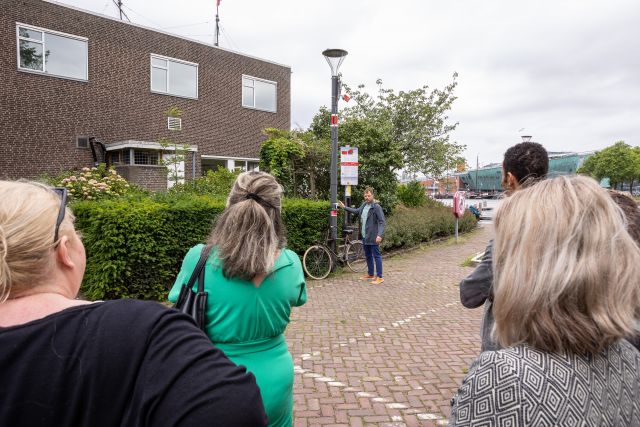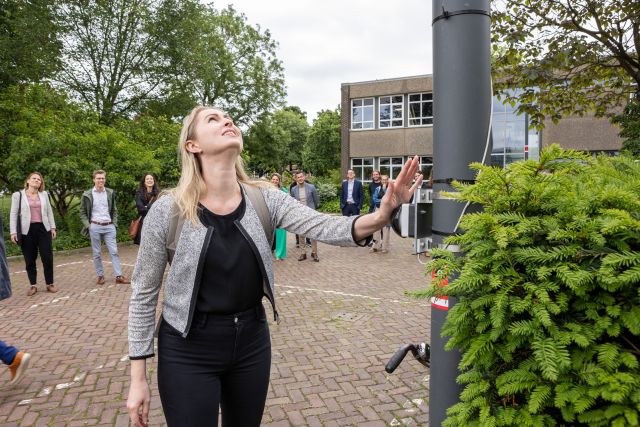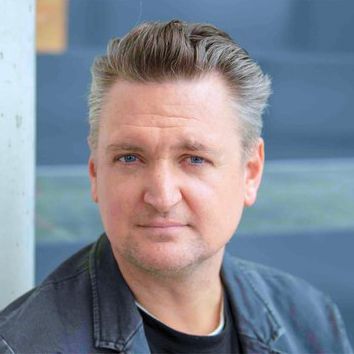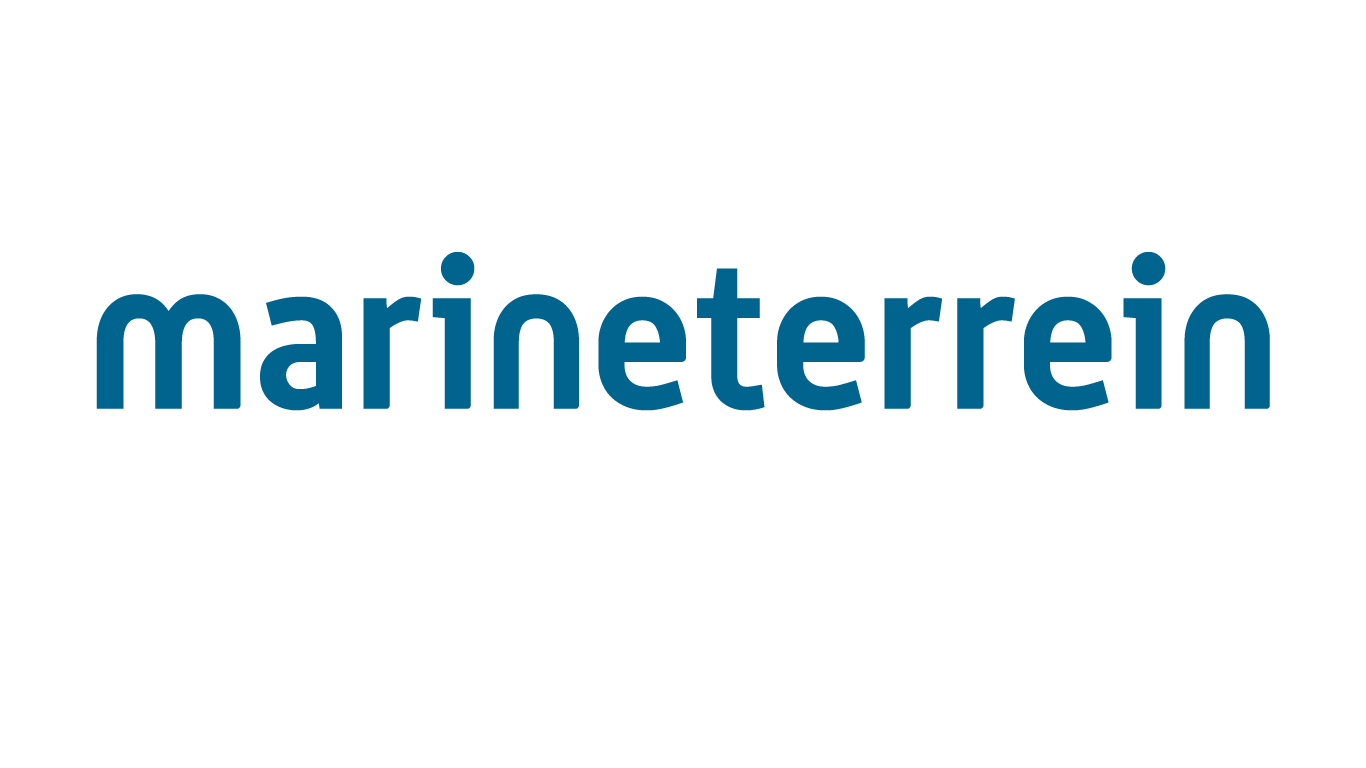Shuttercam
The Shuttercam project investigates the effect of shutters, so-called shields placed over cameras. What if, as a passerby, you could clearly see if and when a camera was on or off?
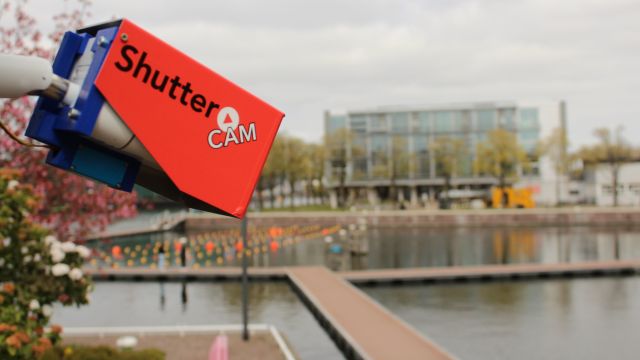
Would residents of a city appreciate it if all cameras in public spaces clearly showed whether they were on or off? What if such shutters allowed you to clearly see whether a camera was on or off, similar to the way many people shield their webcam? The Shuttercam project explores these questions.
The ultimate goal is to design cameras that gather only the required type or amount of data necessary for the city to operate or perform that specific task to safeguard the right of citizens to walk around freely and unobserved.”
— Thijs Turèl, Co-initiator Responsible Sensing Lab
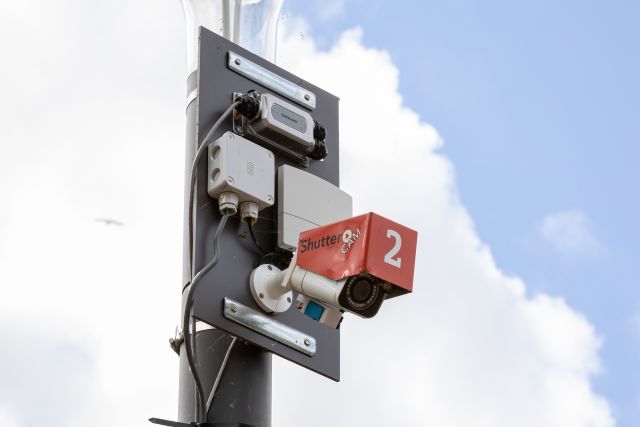
A number of Shuttercam experiments
The Shuttercam project kicked off with a time-lapse camera equipped with a shutter at the office of AMS Institute. The effects of this mini-pilot were investigated by interviewing staff and visitors.
Next, we tested three prototypes of the Shuttercam at Marineterrein Amsterdam Living Lab (MALL):
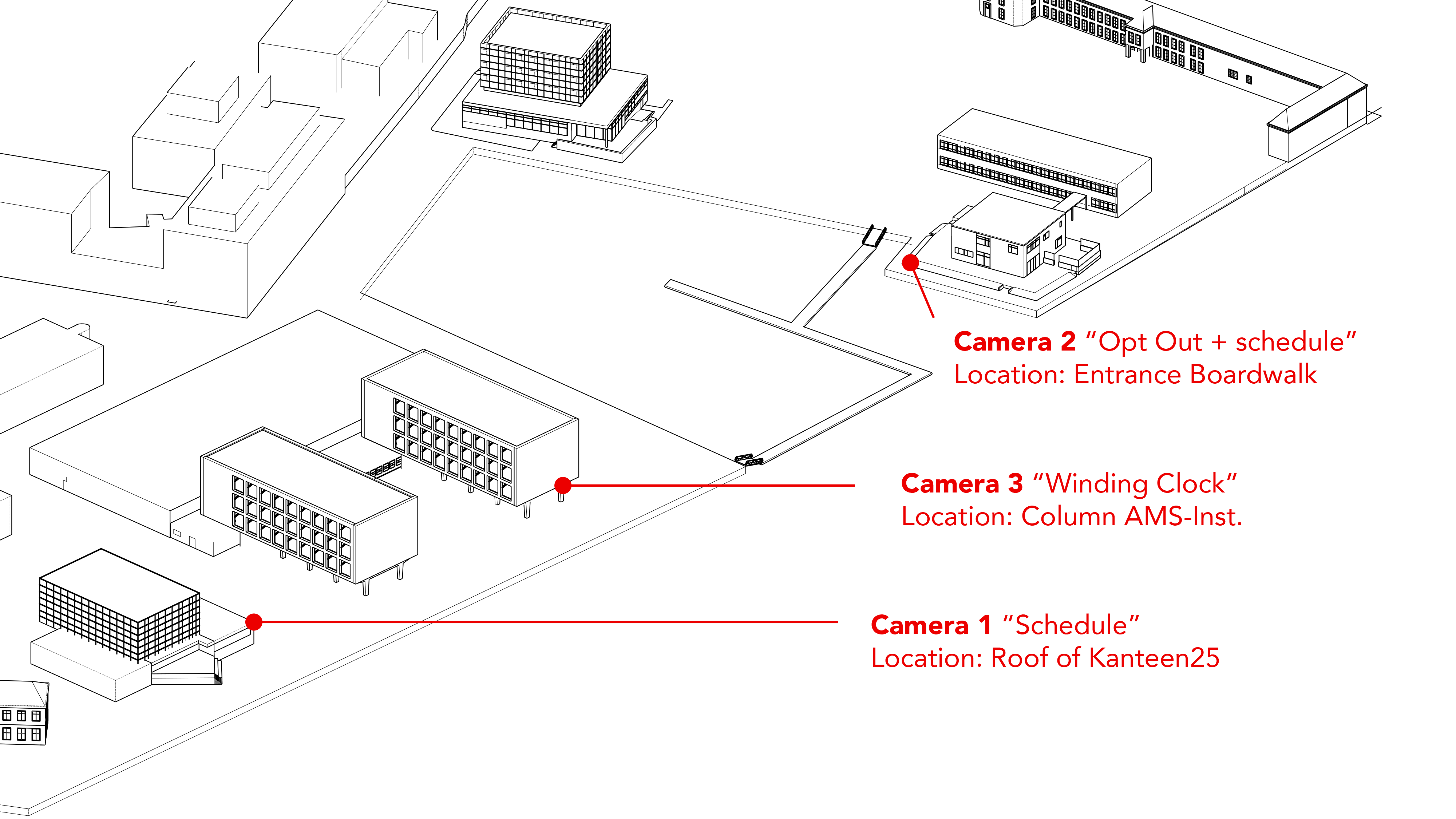
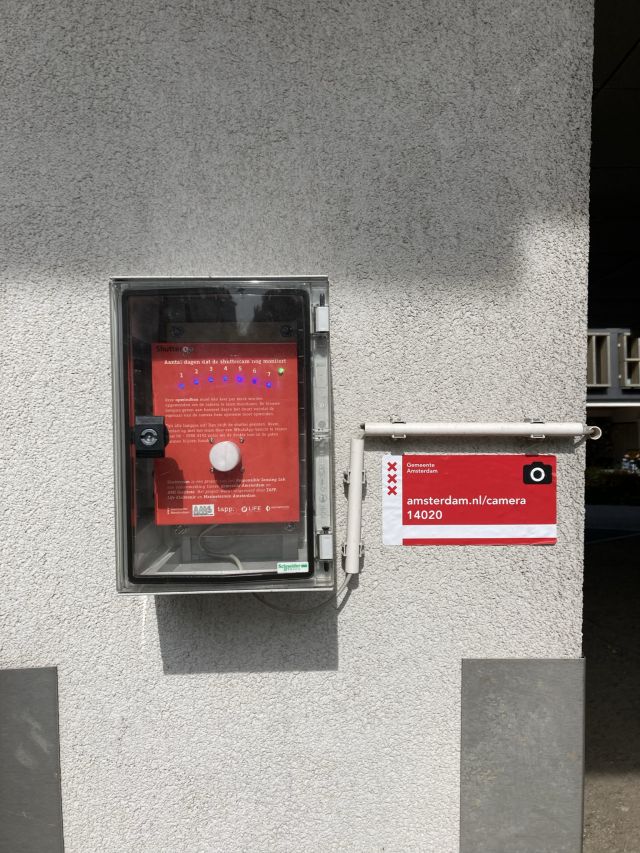
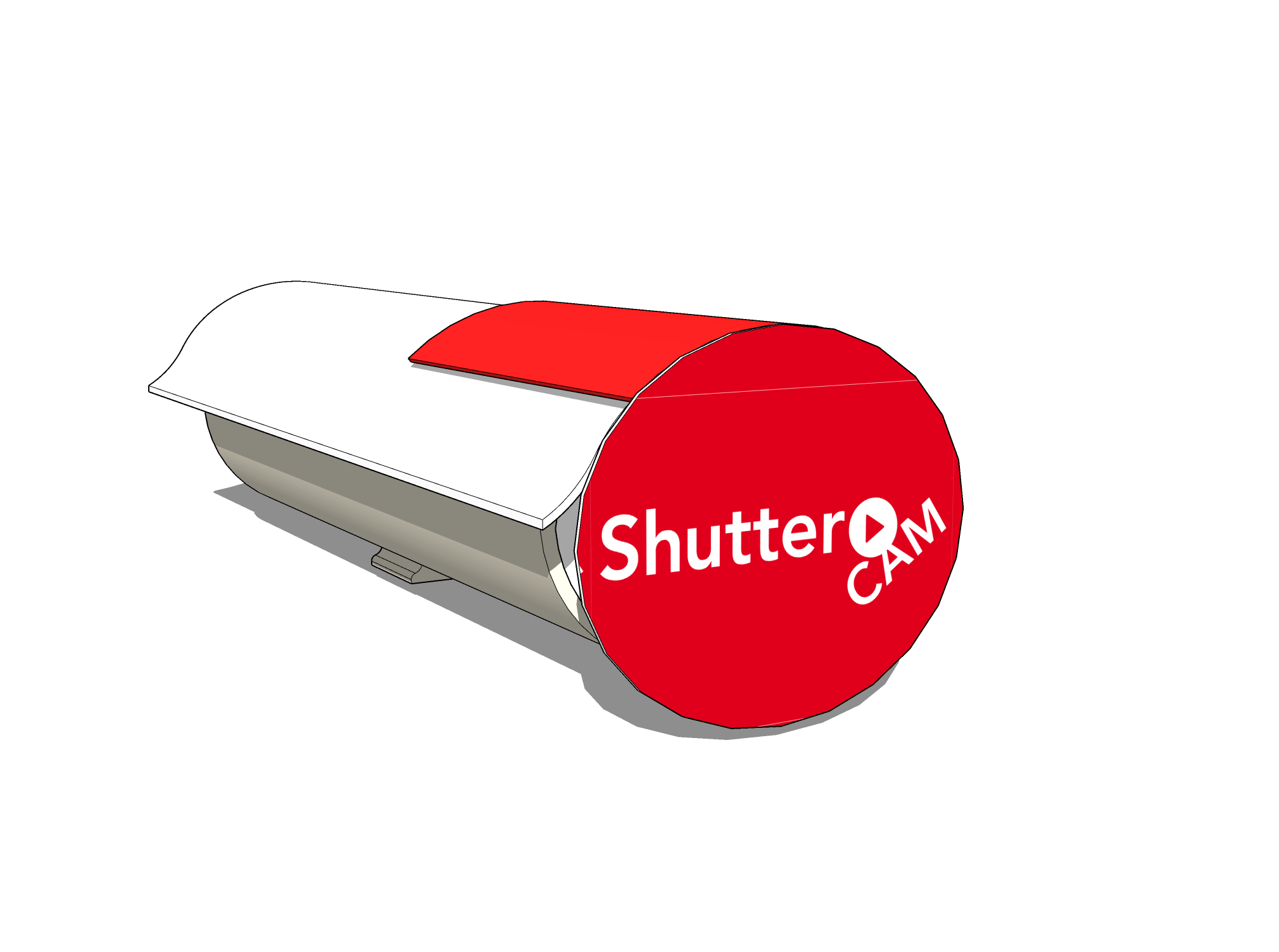
1. Scheduled Shuttercam
We placed the first Shuttercam on the roof of Kanteen25 and focused on the public picnic area. This camera was equipped with a shutter that operated on a schedule. During the summer of 2021, from mid-April through the end of September, the shutter closed between 3 p.m. and 10 p.m. on weekdays and from 10 p.m. to 3 p.m. on weekends. On weekends, the shutter opened between 9:00 a.m. and 10:00 p.m., then closed again. During the winter from October 2021 to March 2022, the shutter was closed.
2. Opt out Shuttercam
The second Shuttercam was attached to the lamppost at the entrance to the boardwalk, opposite the Commander's House. It was also equipped with a shutter that runs on the same schedule as camera 1, except that this Shuttercam also had a large push button. When visitors of Marineterrein pressed this button, the shutter on the camera closed for 15 minutes. It is like an opt-out button.

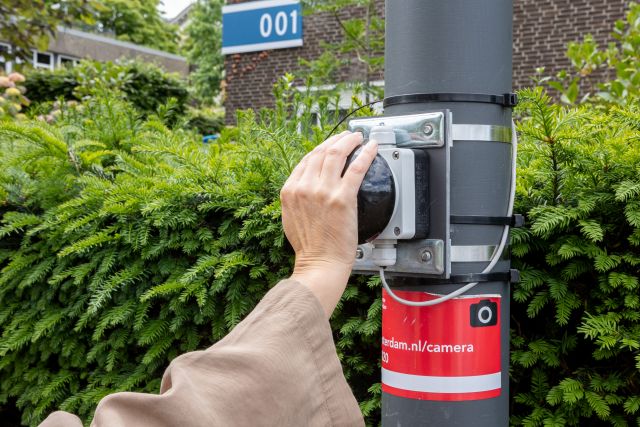
3. Winding Clock Shuttercam
The third Shuttercam was placed at the pillar of Building 027 (AMS Institute West Quay). This camera had a shutter controlled by a winding mechanism. Marineterrein staff had to turn on this mechanism weekly to keep the camera running on schedule. Because of the winding clock, it took more effort to have the camera monitored.
Hence, the winding mechanism adds an additional constraint to the physical operation of the shutter at the hardware level, as an experimental safeguard against any possible hacking of the remotely controlled monitoring system.
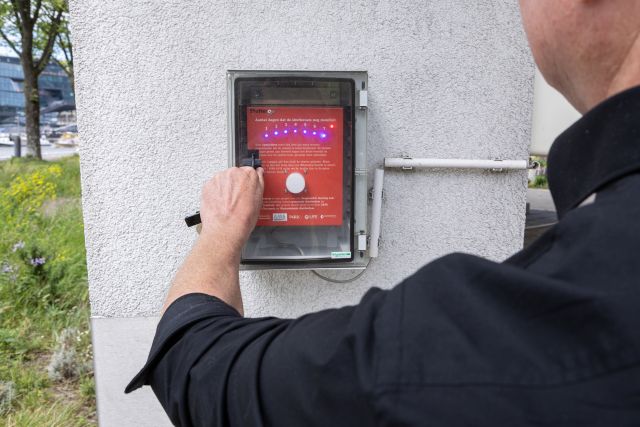
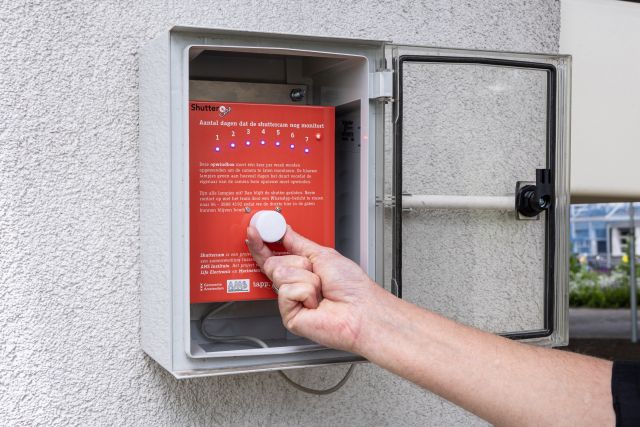
During the test phase of this project, Marineterrein Amsterdam employees had to manually rewind this camera once a week in order to be switched on.”
— Tom van Arman, Smart City, Civic Technologies, Urban Innovations, Architect
Testing hypotheses
With these prototypes in place at Marineterrein Amsterdam Living Lab, we tested several hypotheses:
- Are cameras operated with shutters and an opening-closing time schedule preferred over cameras without a shutter?
- Are cameras with the possibility to opt out preferred even better?
- Does an opt out button make passengers feel more comfortable about the camera?
- Do passengers take control over the operation of the shutters when they have the choice?
- Will cameras still operate when authorities have to put effort in keeping it running?
- Do these experiments raise awareness about the need for cameras in general or the variety of goals they serve?
This experiment also investigated the principle of 'data minimisation'. This refers to the aim of the City of Amsterdam to only collect personal data in public space if it is appropriate, relevant and limited to what is necessary for the purposes for which they are processed. This is why Shuttercams mainly run during peak hours.
The results of the Shuttercam project are used in the design of new, 'responsible' ways of camera surveillance in the city.
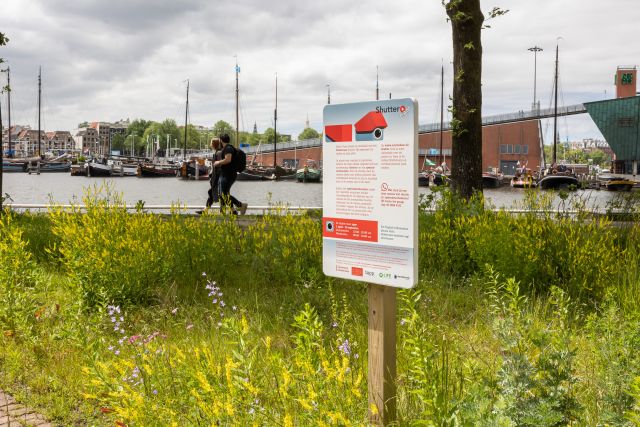
4. Pilot Shuttercams at ArenA
As a result of the Shuttercam project at the Marineterrein, we tested two Shuttercams in the public space at the Johan Cruijf ArenA. Two so-called crowd monitoring systems were installed on the north side of the soccer stadium as an extension of the current pressure monitoring system on the south side.
In short, a crowd monitoring system operates according to an algorithm that reads and analyzes video images. In addition to measuring crowds, and expressing them in usable numbers, this algorithm can determine if people are keeping 1.5 meters away. This is all done completely anonymously, according to all applicable privacy laws.
The video footage is processed automatically and not viewed by humans. It exports only a few frames with unrecognizable, blurred faces. These frames help train the algorithm. Moreover, these images are not stored.
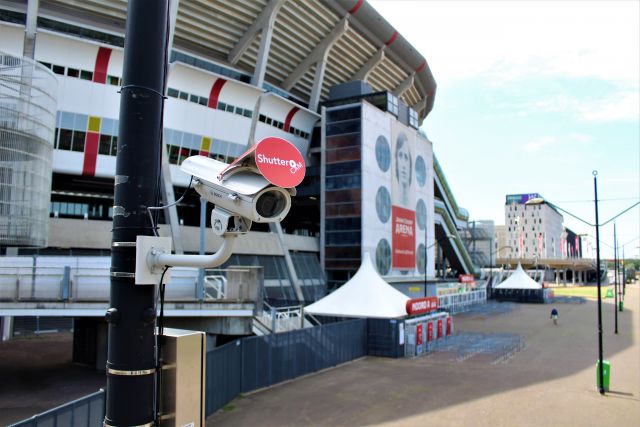
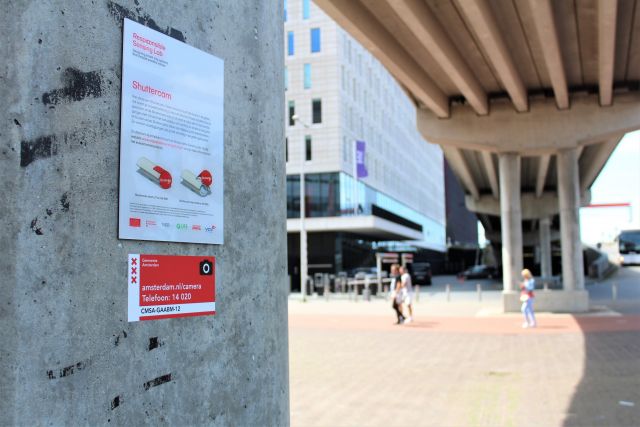
Shuttercam ArenA final results published
The cameras on the north side were equipped with two custom-made shields (shutters), as a follow-up to the Shuttercam project at the Marineterrein. The shutter has a communication function: it clearly shows whether the camera is on or not. This made it possible to monitor the crowds around the ArenA in a way that respects social values such as privacy.
The goal of the Shuttercam project near the Johan Cruijff ArenA was to discover how this privacy-friendly solution can be scaled up for larger public locations. The test period ran from July 2022 and January 2023.
Official report
In this report we describe the main outcomes of the pilot of the two Shuttercams tested in the vicinity of the ArenA. How do professionals, activists and passers-by react to this intervention?
The report is only available in Dutch.
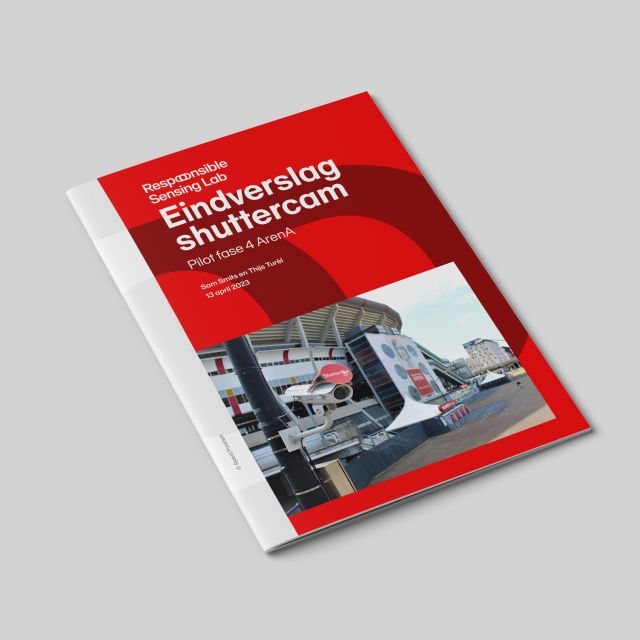
We would love to hear from you
The Responsible Sensing Lab team greatly appreciates your opinion on these experiments. Please send us an e-mail if you have any feedback or questions.
The Shuttercam project is executed by Tapp, Life Electronic and Marineterrein Amsterdam. Our goal is to present the outcome of the experiment during 2021.
The cameras covered by this project are on the map Personal data processing in public space of the municipality of Amsterdam. This map shows where in public space the municipality processes personal data, and for what purpose. Here you can also find the corresponding Privacy Statement.
